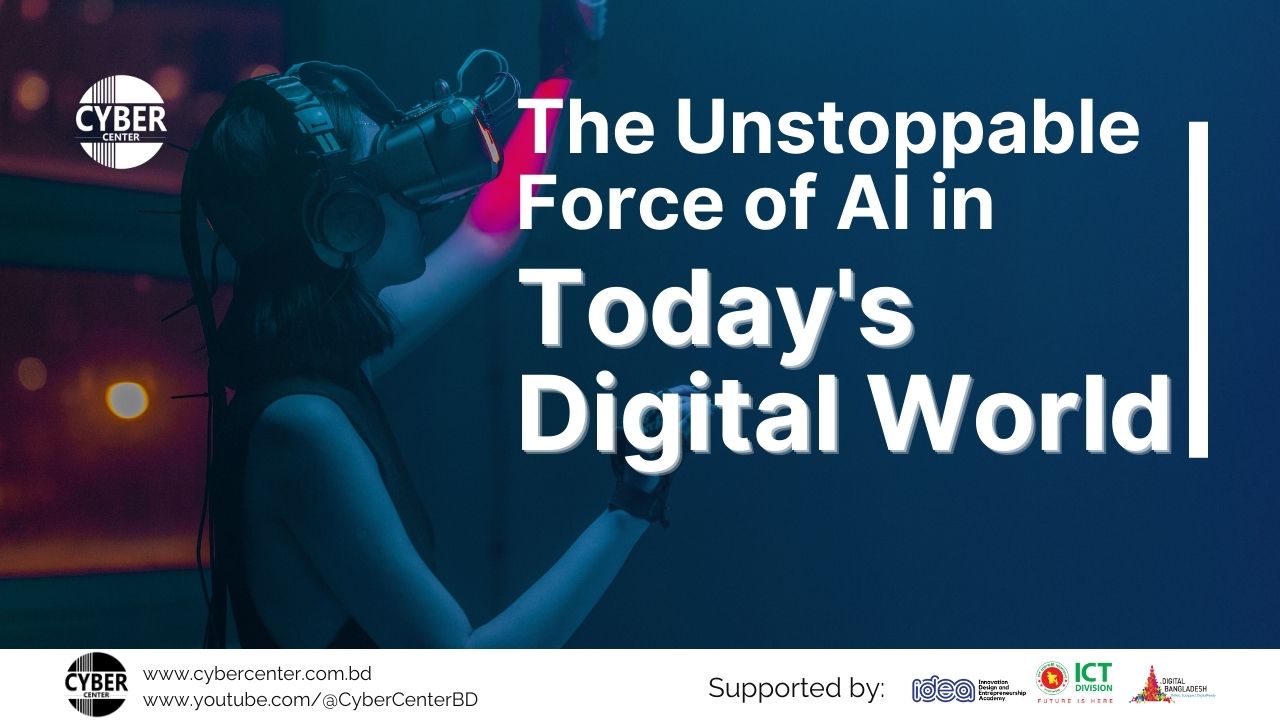Artificial intelligence (AI) has grown into an unstoppable force in today’s rapidly evolving digital world, redefining industries and altering the way we live and work. Although research in artificial intelligence has been going on for decades, its widespread incorporation into everyday life is a relatively new phenomenon. It has permeated several fields and altered how we do routine tasks, make important choices, and use modern tools.
Understanding Machine Learning
AI Definition
What we mean by “artificial intelligence” (AI) is the development of machines that can learn and make decisions in ways that are cognitively comparable to humans. There are two major ways to classify artificial intelligence (AI): narrow AI and wide AI. Broadly speaking, artificial intelligence (AI) refers to the capacity to understand, learn, and adapt to unexpected circumstances, whereas narrow AI is tailored to perform exceptionally well just on a restricted subset of activities.
AI’s Evolution
AI may be traced back to its early phases in the mid-twentieth century. As processing power increased, so did AI’s capabilities. Significant innovations in the subject have occurred throughout the years, including breakthroughs in machine learning techniques, advances in natural language processing (NLP), and the introduction of computer vision technologies.
AI’s Essential Components
AI is made up of different components that work together to attain its capabilities. Among the important features are:
- Machine Learning: The capacity of machines to learn from data and improve their performance over time is referred to as machine learning. It is critical in AI because it allows computers to make predictions and judgments based on patterns and insights gleaned from massive volumes of data. Machine learning algorithms are classified into three types: supervised learning, unsupervised learning, and reinforcement learning.
- Natural Language Processing (NLP): NLP makes it possible for machines to understand written and spoken human words. NLP lets people and computers talk to each other using complicated methods. This makes possible uses like virtual helpers, automatic translation, and mood analysis in many different fields.
- Computer Vision: The capacity of computers to interpret and grasp visual information, similar to human vision, is referred to as computer vision. Computer vision uses image identification and object detection in autonomous automobiles, surveillance systems, and healthcare diagnostics.
AI Applications in Various Industries
The influence of AI may be seen in a variety of industries, where it has the potential to transform processes, improve decision-making, and offer substantial breakthroughs. Let’s look at some major areas where AI is making a significant difference:
Healthcare
- AI in Medical Diagnostics: AI is quickly boosting accuracy and efficiency in medical diagnostics. Medical pictures, such as X-rays and MRI scans, are analyzed using machine learning algorithms to find abnormalities and aid clinicians in diagnosing illnesses. Computer-aided detection systems in radiology and AI-enabled pathology platforms are two examples of AI-based diagnostic technologies.
- AI in Drug Discovery: AI is widely used in pharmaceutical research to speed up the discovery and development of novel medications. AI aids in finding possible medication candidates, forecasting their efficacy, and streamlining the formulation process by employing machine learning algorithms. AI-powered drug discovery has the potential to accelerate innovation while also enhancing patient outcomes.
Banking and Finance
- AI in Fraud Detection: AI plays a critical role in boosting security measures and identifying fraudulent activity in the finance and banking sectors. Machine learning algorithms examine transaction data for trends and abnormalities that may indicate fraudulent conduct. Real-world examples of AI countering fraud include the use of anomaly detection algorithms in the prevention of credit card fraud.
- AI-Powered Trading Systems: Artificial intelligence (AI) has transformed automated trading in financial markets. Sophisticated algorithms analyze massive volumes of market data, find trends, and execute transactions with pinpoint accuracy and speed. In spite of the benefits, such as increased efficiency and less human error, algorithmic trading is not without its negatives.
Automation and Manufacturing
Industrial Robotics: Artificial intelligence-powered robotics has revolutionized the industrial industry by automating operations and increasing productivity. AI-enabled robots can execute complicated jobs, cooperate with human employees, and adapt to changing situations. AI integration in industrial processes allows for more efficient operations and simplified operations. However, issues like human-robot cooperation and upholding safety standards must be addressed.
Quality Control and Defect Detection: AI-based solutions have had a substantial influence on industrial quality control. AI systems may spot flaws early in the process by evaluating real-time data from manufacturing lines, minimizing waste, and boosting product quality. The ability of artificial intelligence to detect minor anomalies and deviations contributes to enhancing the overall precision of manufacturing processes.
Ethical Issues and Difficulties
While AI provides tremendous potential and breakthroughs, it also creates ethical concerns and obstacles that must be carefully considered:
Privacy and Data Security
Due to their data-heavy nature, AI systems raise concerns about the collection, storage, and use of personally identifiable information. To avoid possible exploitation of personal data, it is critical to strike a balance between AI breakthroughs and individual privacy.
Discrimination and Bias
AI systems are prone to biases, which are often reflected in the data used for training. This may result in prejudice against certain persons or groups. To achieve fair and impartial AI systems that benefit all users, biases must be addressed and eliminated.
Displacement of Employees
One of the major worries about AI is its influence on jobs. As AI systems automate specific jobs, job displacement is possible. Strategies that prioritize upskilling and reskilling have become critical for adapting to the changing nature of work.
The AI Future
As AI advances at a rapid rate, the future promises both opportunities and threats. Two things demand special consideration:
Artificial Intelligence and Superintelligence
The potential for universal AI to surpass human intelligence and lead to a superintelligence scenario has been the subject of much discussion. While the development of superintelligence may increase our understanding of the cosmos and help us overcome difficult problems, it also raises important ethical and regulatory concerns.
Collaboration Between Humans and AI
AI should be seen not as a danger but as a means of cooperation between humans and robots. By using each other’s unique skills, symbiotic relationships can form. This lets people focus on jobs that require imagination, understanding, and making hard decisions. Data analysis, pattern recognition, and routine tasks are just some of the areas where AI has proven useful.
Conclusion
AI’s inexorable momentum is reshaping our digital world, infiltrating every industry and opening the path for unimaginable possibilities. AI’s influence is evident, from healthcare to banking, manufacturing to day-to-day operations.
As AI progresses, it is imperative to address moral issues, privacy considerations, and the potential displacement of workers. The future of artificial intelligence has vast opportunities and potential, necessitating prudent navigation to optimize benefits and address associated challenges.
FAQs
What exactly is AI?
-Artificial Intelligence (AI) is the term used to describe the ability of robots to mimic human intelligence and perform tasks that were traditionally reliant on human cognitive abilities.
How is artificial intelligence used in healthcare?
-AI may help with medical diagnostics, medication development, patient monitoring, and customized treatment, among other things.
Can artificial intelligence be prejudiced or discriminatory?
-Yes, AI systems may be prejudiced or discriminating, reflecting the biases contained in the training data. Biases are being eliminated to produce fair and impartial AI systems.
Is artificial intelligence a danger to human employment?
-AI may automate certain processes while damaging employment, but it also creates new jobs and requires workers to be upskilled and reskilled.
What does the future of AI hold?
-AI’s future is full of opportunities and difficulties. Speculations vary from the possibility of superintelligence exceeding human intelligence to the symbiotic partnership between humans and AI, revealing new horizons of knowledge and invention.





